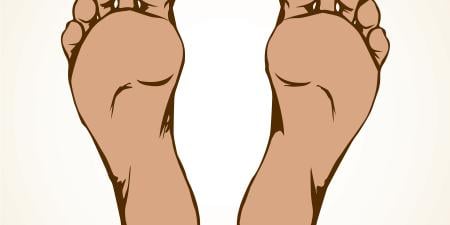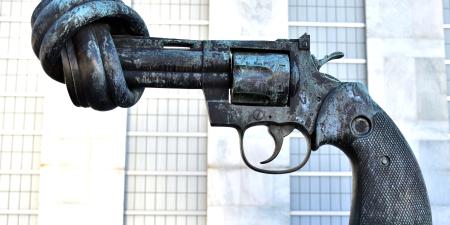In a fraction of a second, trauma changes us. Trauma injures organs, fractures bones, and makes us bleed, but it also leads to suffering, demoralization, and fear. While physical injuries can often be neatly classified, emotional and spiritual injuries cannot. These burdens are shouldered by many, not just those who are physically injured. Families, friends, communities, and even those who care for the injured are also wounded.
Trauma professionals’ decisions can change us, too. Trauma surgeons must make high-stakes decisions, often in rapid succession and without knowledge of a patient’s identity or history. In our field, the “golden hour”—the hour just after an injury when medical care is most likely to prevent death—is dogma [1]. For this reason, action almost always outpaces deliberation. Choices such as whether to give blood, go to the operating room, amputate, or try to salvage a mangled extremity are often made without an understanding of our patients’ life goals and values. As a result, we almost always sacrifice respect for autonomy in favor of what we presume to be our patients’ best interest.
Just as the treatments we provide may prioritize best interest over autonomy, so the structure of spaces in which we practice prioritize functionality over comfort. Trauma bays, by design, are utilitarian. They help clinicians assess and treat patients in a systematic, streamlined manner. Patients lie underneath bright lights, surrounded by dozens of unrecognizable clinicians who shout observations and instructions above the cacophony. To the untrained observer, the trauma bay is hectic and perhaps cruel. To the specialist, it is specifically designed to give us the power to save lives. However, providing care in this manner is not without costs—it is possible that medical interventions retraumatize patients or that the treatments provided are not congruent with patients’ wishes. How, then, can we maximize the benefits of our care while minimizing these associated burdens?
This issue of the AMA Journal of Ethics will explore the ethics of urgent decision making in trauma settings, what it means for clinicians to approach decisions responsibly, and what it means for patients and their loved ones to have the aftermath of decisions communicated with clarity and compassion. This issue also will explore what trauma care policies can mean for public health, community planning, and resource allocation.
When ethical dilemmas do occur, clinicians must quickly weigh the risks and benefits of their actions along with the little they know of their patients. Clinicians practicing this “speed ethics” cannot rely on careful deliberation and discussion typically used in ethical decision making. Our patients are frequently unable to engage in informed consent discussions. Often, there is simply no time. Ashley Suah and Peter Angelos discuss the nature of consent in the trauma bay—which is presumed rather than requested—through examination of the case of a patient who resists being intubated. Although this practice allows trauma surgeons to expeditiously provide lifesaving care, for those unaccustomed to trauma care or to physicians in training, it can be viewed as paternalistic.
Just as we care for patients, so we care for their families who often have been traumatized by the events—such as car crashes or violence—that brought their loved one to a trauma center. It is crucial that we take family members’ emotional state into consideration as we communicate with and chaperone them in health care settings. Despite the importance of conducting these difficult conversations skillfully, surgical training tends to deemphasize acquisition of communication skills, instead assigning greater priority to the technical aspects of care. In their communication with families, how can surgeons balance clarity and compassion against the need for swift, high-stakes decisions? Bradley M. Dennis and Allan B. Peetz examine challenges trainees face in communicating medical information and discussing goals of care with families in a case of imminent brain death.
Sometimes, family members wish to accompany patients as they receive trauma care in an act of support or perhaps even closure. Benny L. Joyner, Jr., draws on the literature and his experience with family presence in the pediatric intensive care unit to explore the benefits and burdens of allowing family members to be present during their child’s resuscitation. In his winning essay for the John Conley Ethics Essay Contest, Matthew Traylor argues that family presence during cardiopulmonary resuscitation and in the trauma setting are not completely analogous but that the latter can be ethically justified if chaperoning systems are in place.
When trauma care is not life saving, ought clinicians to prioritize organ recovery? For patients who have not specified their wishes related to organ donation, and sometimes even for those who have, how should we discuss these topics with families in the wake of trauma? In analyzing a case of a young trauma patient who dies with no family present, Sandra R. DiBrito and Macey L. Henderson discuss hospital procedures for communicating about organ donation and the need to uphold the principles of nonmaleficence and respect for patients and families.
Trauma care professionals in all settings must use resources judiciously, as allocation of these resources can influence a patient’s course, although resources vary within and between regions. Health care professionals know that within rural areas or urban “trauma deserts,” proximity to a trauma center can influence mortality [2]. Higher-level-of-care transfers to trauma centers, which occur frequently as a result of regionalization of trauma care, also utilize precious resources. DiBrito and Christian Jones analyze a case in which regionalization of trauma care has potentially influenced a patient’s course, arguing that trauma professionals ought to regard transfer as an element of trauma care, rather than a delay in care, as they make critical decisions.
What is the role of the trauma surgeons outside of trauma bays and acute care settings? Peetz and Adil Haider argue that trauma surgeons have a special moral obligation as well a professional responsibility to engage in gun violence prevention and advocacy. I and Selwyn O. Rogers, Jr., explore the duty of trauma centers not only to treat those who suffer violent injuries but also to engage in violence prevention efforts in order to help stop the cycle of violence that plays out, in part, under the bright lights of the trauma bay. And Samuel A. Tisherman examines the challenges that trauma researchers face in defining and reaching out to the relevant at-risk community.
Patients’ and other clinicians’ perceptions of trauma surgeons can set the tone for their interactions with trauma surgeons. Unfortunately, misperceptions and stereotypes can lead to implicit bias, as discussed by Heather J. Logghe, Tyler Rouse, Alec Beekley, and Rajesh Aggarwal. They argue that though the classic stereotype of the abrasive white male surgeon continues to influence surgeons’ interactions with colleagues and patients, social media movements and an inclusive interpretation of history are challenging this stereotype.
For those affected by trauma, the location of the event or “the scene,” as clinicians providing trauma care call it, can become a powerful symbol of the human condition and of loss. According to photographer David B. Nance, these spaces “confront us with the reality of death as an actual event that arrives for a particular person, at a particular place, at a particular time” [3]. Nance’s powerful collection of images of Descansos, or roadside memorials to people who have died as a result of motor vehicle collisions, were collected as part of his exploration of these sites throughout the American West, and Nance, I, and Elizabeth B. Dreesen reflect on their implications for trauma care.
Finally, in the podcast, Karen Brasel and David Hoyt discuss how trauma systems have developed over time and how they respond to the changing needs of patients and communities. They explore how trauma surgeons are incorporating geriatric trauma care into their practice as a result of the growing population of elderly patients and outline other ways that trauma surgeons can promote health equity in their work.
Trauma bays are at the nexus between health systems and the diverse communities in which they are located. As a result, trauma care lies at the intersection of public health and the health and well-being of individuals. This issue of the AMA Journal of Ethicsaims to help guide trauma surgeons in their work at the intersection of clinical practice, ethics, and public health.
References
-
Rogers FB, Rittenhouse KJ, Gross BW. The golden hour in trauma: dogma or medical folklore? Injury. 2015;46(4):525-527.
- Crandall M, Sharp D, Unger E, et al. Trauma deserts: distance from a trauma center, transport times, and mortality from gunshot wounds in Chicago. Am J Public Health. 2013;103(6):1103-1109.
-
Nance DB. Descansos: roadside memorials on the American highway: about these photographs. http://webpages.charter.net/dnance/descansos/#aboutthesephotos. Accessed April 2, 2018.



